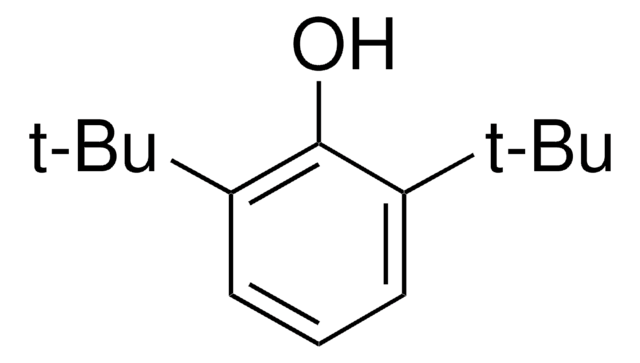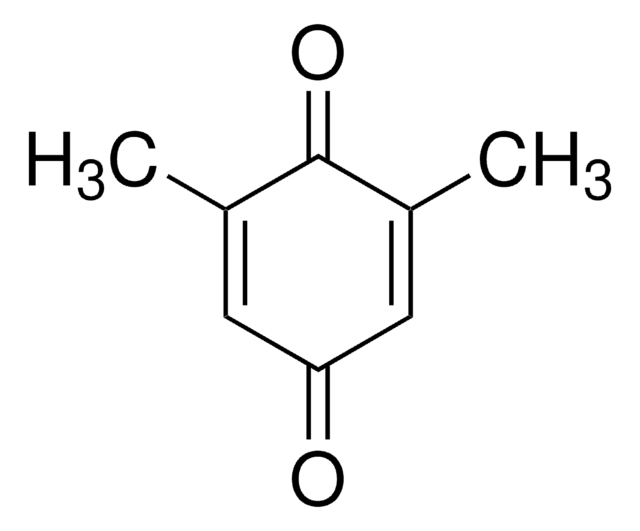153931
2,6-Di-tert-butyl-1,4-benzoquinone
98%
Sinonimo/i:
2,6-Bis(1,1-dimethylethyl)-2,5-cyclohexadiene-1,4-dione, 2,6-Bis[1,1-dimethyl ethyl]quinone, 2,6-Di-tert-butyl-2,5-cyclohexadiene-1,4-dione, 2,6-Di-tert-butylbenzoquinone, 3,5-Di-tert-butylquinone
About This Item
Prodotti consigliati
Saggio
98%
Forma fisica
solid
Punto di fusione
65-67 °C (lit.)
Stringa SMILE
CC(C)(C)C1=CC(=O)C=C(C1=O)C(C)(C)C
InChI
1S/C14H20O2/c1-13(2,3)10-7-9(15)8-11(12(10)16)14(4,5)6/h7-8H,1-6H3
RDQSIADLBQFVMY-UHFFFAOYSA-N
Applicazioni
Avvertenze
Warning
Indicazioni di pericolo
Consigli di prudenza
Classi di pericolo
Eye Irrit. 2 - Skin Irrit. 2 - STOT SE 3
Organi bersaglio
Respiratory system
Codice della classe di stoccaggio
11 - Combustible Solids
Classe di pericolosità dell'acqua (WGK)
WGK 3
Punto d’infiammabilità (°F)
Not applicable
Punto d’infiammabilità (°C)
Not applicable
Dispositivi di protezione individuale
dust mask type N95 (US), Eyeshields, Gloves
Certificati d'analisi (COA)
Cerca il Certificati d'analisi (COA) digitando il numero di lotto/batch corrispondente. I numeri di lotto o di batch sono stampati sull'etichetta dei prodotti dopo la parola ‘Lotto’ o ‘Batch’.
Possiedi già questo prodotto?
I documenti relativi ai prodotti acquistati recentemente sono disponibili nell’Archivio dei documenti.
I clienti hanno visto anche
Il team dei nostri ricercatori vanta grande esperienza in tutte le aree della ricerca quali Life Science, scienza dei materiali, sintesi chimica, cromatografia, discipline analitiche, ecc..
Contatta l'Assistenza Tecnica.





![7,9-Di-tert-butyl-1-oxaspiro[4.5]deca-6,9-diene-2,8-dione certified reference material, TraceCERT®, Manufactured by: Sigma-Aldrich Production GmbH, Switzerland](/deepweb/assets/sigmaaldrich/product/structures/294/930/cd996125-79d8-4b2f-885c-f43d19084fc0/640/cd996125-79d8-4b2f-885c-f43d19084fc0.png)







